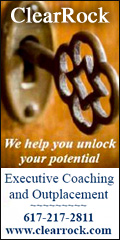
| November 2012 | Past Issues | Advertise |
The Big Three – Tough Questions Every HR Manager Should Answer
HR professionals often shy away from — or freak out about — these lofty, pie-in-the-sky exercises. But it is essential for constructing a focused and comprehensive strategic vision for HR. If your organization, like many, boasts that its people are the differentiator, then this is essential for the entire organization. Of course, if your organization is developing a company-wide strategic vision, your leadership team may be coming to you with these questions. Be one step ahead of your CEO and present him/her with your answers (instead of scrambling to think of something!). The questions are centered around the most important people issues — retention, recruitment and leadership. Who do we keep? Who do we keep? Once you’ve identified your MVPs, you need to develop strategies for keeping them. You must implement the programs that are important to people. It has been proven countless times that money and perks aren’t what keep employees engaged. Employees would skip a free lunch in favor of a stretch assignment and other development opportunities. There needs to be a company-wide commitment for education and training opportunities. Employees want to hone their skills so they can be more marketable. (This is also how you develop your leaders.) Equally important is to answer, who do we not want to keep? Some people have
skills that may need to be phased out. This doesn’t mean wide-spread lay-offs.
Your organization can take a more subtle approach. You could have a planned
attrition, where you stop hiring for certain positions and skill sets, or
active attrition where you can help people find external opportunities. What are the competencies the organization, and each department, will need
to grow moving forward? Does the organization have enough diversity in its’
employee base? What skill sets will be most in demand? Will the business model
change? If so, can we fill the need? Where can we recruit these people? Make sure to have a succession plan in place for every member of the leadership team, and a back-up plan in case of changes. This exercise shouldn’t be reserved for just the top, but for every senior manager in the company. In IT, finance, sales, marketing: who will the next leader be? Where are we finding our leaders? Internal development becomes vital to organization because they can grow the type of leaders your organization needs. Organizations should strive to be more fluid, so a sudden departure doesn’t devastate a company or department. Back-fill positions and try cross-over assignments so employees are well-versed in more than one role. By asking your team these three tough questions, you can help your organization reach its goals, differentiate your company by putting your people first, and give your HR career a boost by earning a spot at the leadership table. |
|
303 Wyman Street, Suite 285, Waltham, MA 02451-1253 |
 |


